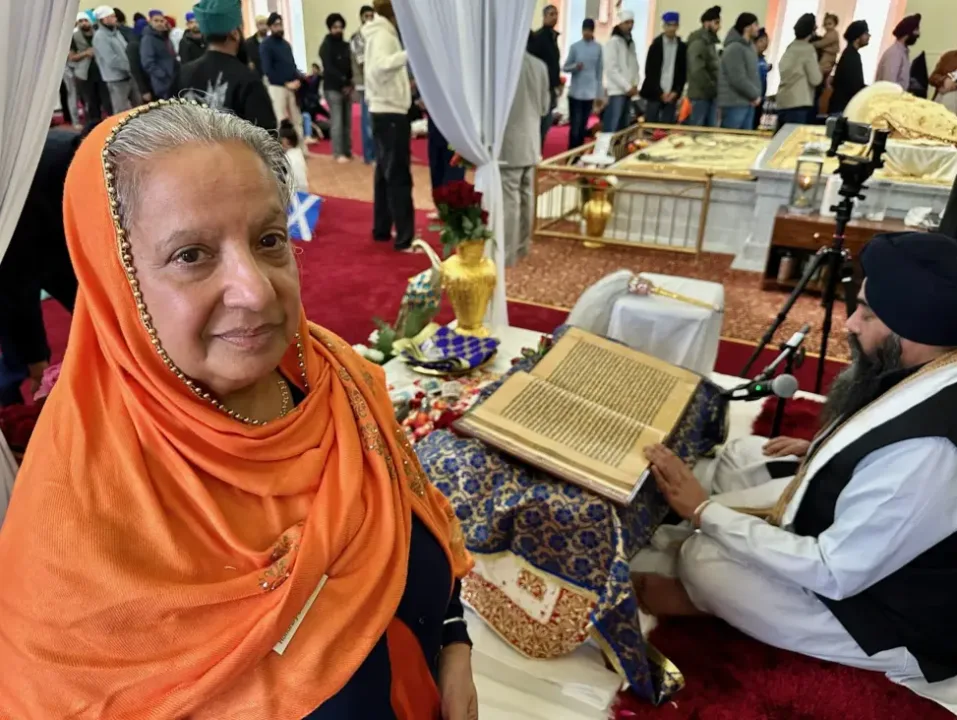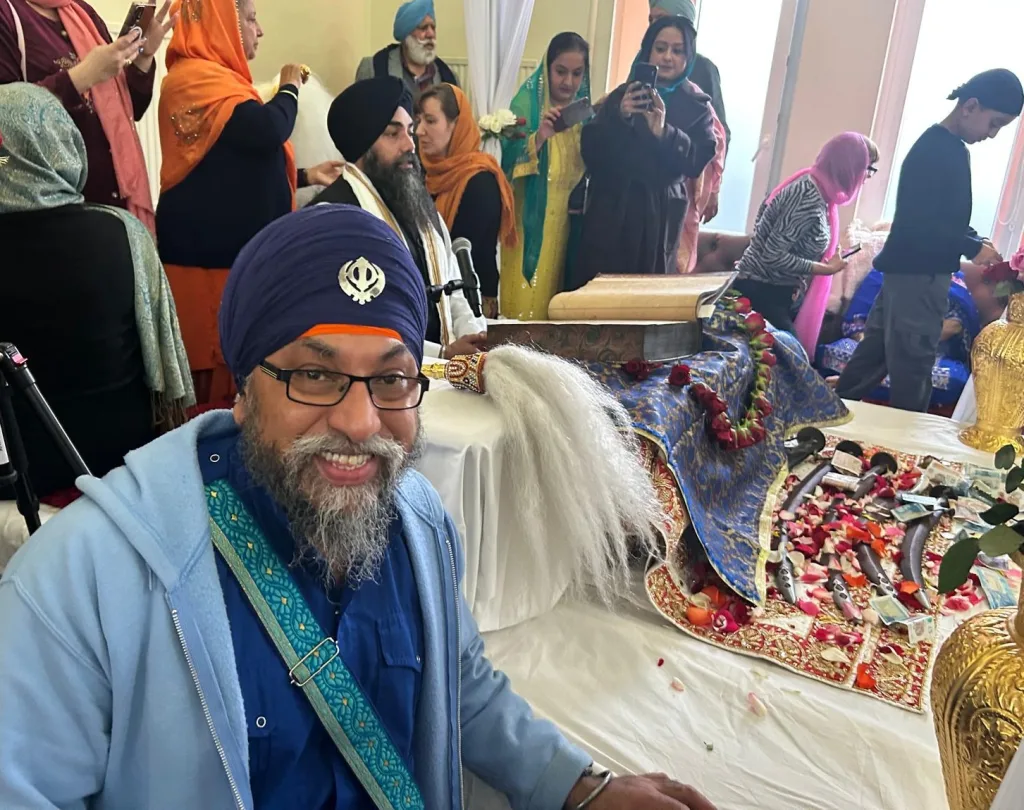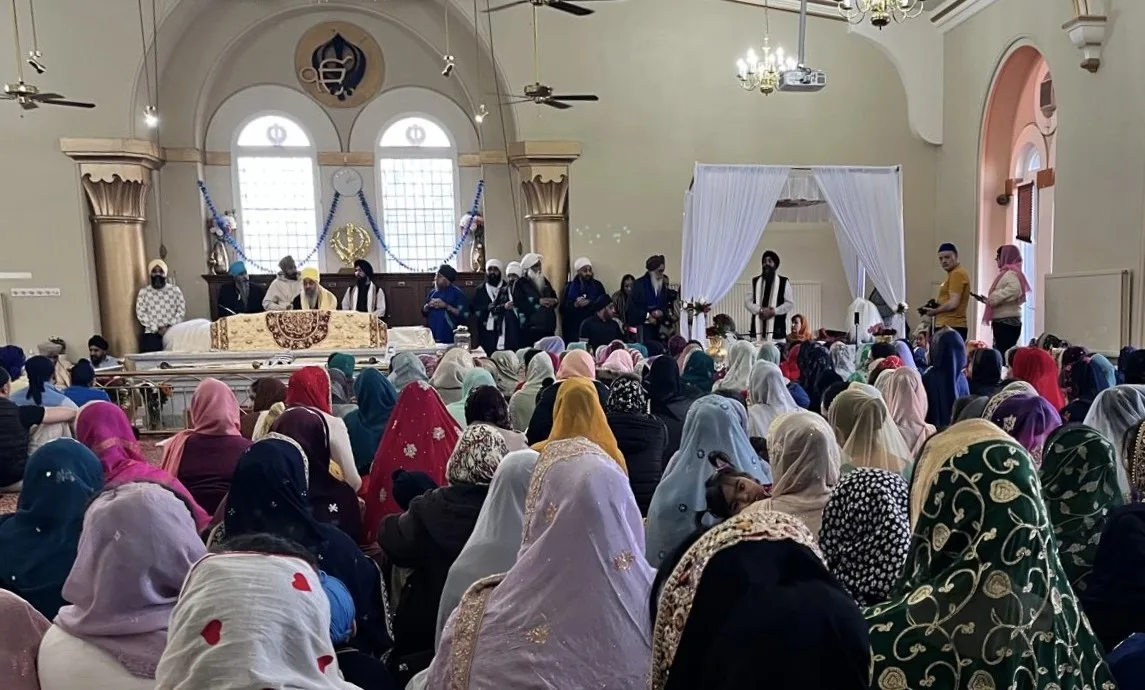Thought to be the oldest of its kind in the UK, the Guru Granth Sahib is one of three Sikh scriptures at the University of Edinburgh.
Formerly in the possession of Kharak Singh, the second Maharaja of the Sikh Empire, it was taken from the fort at Dullewalla in India during its capture in 1848.
The scriptures were given to the University by Sir John Spencer Login, who also brought the Koh-I-Noor to Queen Victoria.
While the scriptures have likely been at the University for more than 175 years, efforts to learn more about them began in 2020.
“Sikh Researchers from England were looking for Sikh artefacts and found the entries to the scriptures on the University’s website,” explains Trishna Singh.
The University holds more than a million items in its vast, historic collections.
The University’s Heritage Collections team is constantly updating its catalogues of archives, rare books and objects. However, the vast scale means that uncovering and providing access to specific items can take significant time and effort.
Following the researchers’ enquiry, University Archivist and Research Collections Manager Rachel Hosker sought to consult with the Sikh community and so connected with the chaplaincy.
Working together
As the University’s Honorary Sikh Chaplain, Trishna has been providing support to students and staff since 2012.
“While I’m not a religious leader, my role is to represent the Sikh community,” Trishna explains. “If somebody needs guidance, my connections mean I’m able to put them in touch with the relevant people.”

Trishna was invited to visit the Centre for Research Collections. Located within the University’s Main Library, a labyrinth of research rooms and carefully managed storage areas document thousands of years’ worth of history.
“I’d visited the library many times before, but I had no idea about the archives and all they contained – all on the 6th floor!”
Trishna says seeing the scriptures for the first time was a mind-blowing experience.
“I was so amazed, but there was part of me that was upset. I thought of my grandparents and my parents who’d lived in Glasgow, Scotland since the late 1930s and never knew that there was this wonderful, amazing piece of our history sitting here in the University.”

Cultural considerations
Trishna’s first visit quickly led to changes in the way the scriptures are stored.
The University uses range of controlled measures to preserve items in its collections. This includes temperature, humidity and lighting controls to protect fragile items from deterioration.
But further considerations are required to ensure religious items are treated with appropriate care and respect.
“I advised Rachel that they need to be wrapped in a certain way with specific cloths and stored at a higher level.”
The cloths were donated to the University by members of the Sikh community. “It was considered a great service that we had the honour to be able to present the material to protect the books.”
All guidance was taken on board, including ensuring that anyone viewing the scriptures had their head covered, shoes removed and hands washed.
“Trishna explained to us that these weren’t just manuscripts but are living embodiments of what it means to be Sikh,” explains Rachel. “So, it’s important that we made these considerations and were able to observe, where we could, the traditions of the Sikh community.”
“I think that for me was very, very respectful of Rachel,” adds Trishna. “Even after Sunday’s event, people asked me if the University knew the protocol for caring for and displaying the Sri Guru Granth Sahib Saroop and I don’t have any doubts in my mind that it has been taken on and followed.”
Conservation work
Following Trishna’s first visit, the Collections team contacted representatives from Oxford University, the British Library and John Rylands Research Institute.
“We wanted to work with people from collections throughout the UK who had experience caring for Sikh texts,” says Rachel.
The representatives joined a University workshop with a Sikh conservator and produced a report on the scriptures’ conservation needs.
A key element of this work also focused on understanding their provenance. Royal Asiatic Society letters from 1851 provided further information about which Guru Granth Sahib volume they believed it was. The texts themselves revealed even more.
“On one of the last ‘Ang’ Pages of the scriptures, an ‘ingredients list’ shows the type of ink used to write it. If we’re able to find out more about the materials, it tells us about the practise of producing them, which in turn tells us more about their history.”
Emotional ceremony
Around 400 people attended event at Edinburgh Gurdwara, which took many months to prepare for. People travelled hundreds of miles to see this sacred handwritten Sri Guru Granth Sahib.

“These scriptures are for the people, by the people. They are in language that is understandable by the ordinary person,” explains Trishna. “So, for me it was important to show it to the whole community and not just to a chosen few.”
“It used to pain me that we would go to museums and other historic places and would never see anything that reflects us.
“I’ve had so much feedback. Younger generations, people with young families, telling me how grateful they were to be able to view this Sacred Guru Granth Sahib.”
The road ahead
The University’ Heritage Collections team is continuing its conservation work on the three scriptures. They will also continue ongoing dialogue with the Sikh community on future opportunities.
“There’s also the element of what we do next with items in our collections from other faiths,” says Rachel. “How can we understand more about them while also balancing research and showing respect to them.”

Trishna hopes it will also lead to more ways to make Sikhism accessible to people through research and learning opportunities.
But for Trishna, a key component of this will be to ensure the books remain in Scotland.
“It’s a very painful history and it’s not something we forget. But we have to work together to make this amazing part of our written history is accessible to the future generations,” says Trishna. “So for me, it’s really important that artefacts that belong to the Sikh community through the colonial past remain here.”
Discover more
Images courtesy of Trishna Singh and members of the Edinburgh Sikh community.





